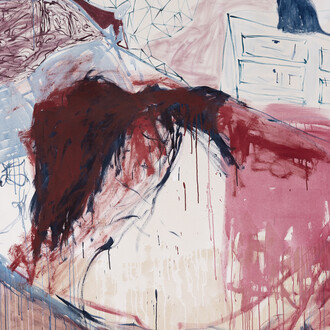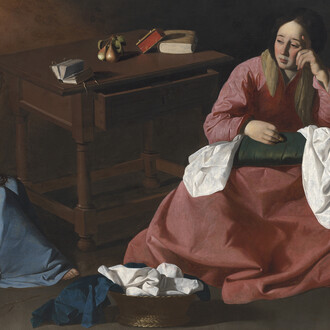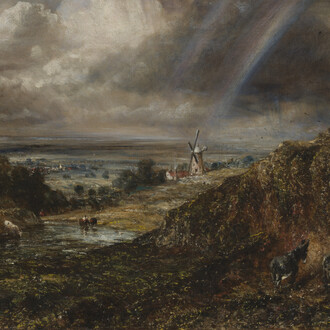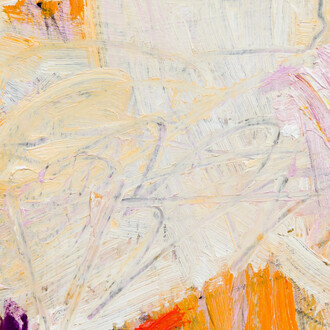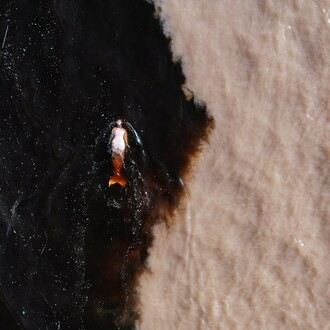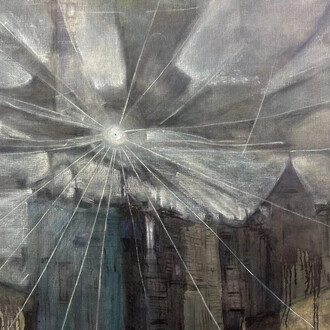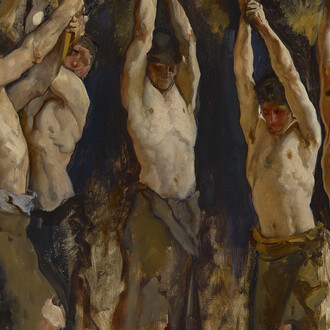Now, again, poetry
violent, arcane, common,
hewn of the commonest living substance
into archway, portal, frame
I grasp for you, your bloodstained splinters, your
ancient and stubborn poise
—as the earth trembles—
burning out from the grain.(The fact of a doorframe, Adrienne Rich, 1974)
As the earth trembles stages a conversation on artistic creation, drawing together eight artists working in abstract painting whose practice is intently focused on process and surface. Each of them brings diverse media into their practices, materially and conceptually. The title is drawn from American feminist writer Adrienne Rich’s 1974 poem The fact of a doorframe, in which she narrates the cathartic, mighty process of poetic ideation. As the earth trembles likens the disruptive yet generative force of self-expression in language to that of painting. Rich’s Doorframe, mundane yet open-ended with its liminal purpose, is reinterpreted here as the pictorial frame, a demarcation of surface and space where subtle meanings found in linguistic fragments and splinters are immortalised as brushstrokes and marks.
Each of the artists in As the earth trembles has a distinctive approach to abstraction that centres painting as both a vessel and a force. The artists grapple with the psychology of making and the experience of human existence, especially at a time when hierarchies of power are obstructive to progress - whether that be with regards to LGBTQ+ rights, climate change, or racial and civil justice.
In times that are fragile or fraught, as the earth trembles around us, painting develops and endures. Alvaro Barrington’s materially rich compositions incorporate burlap, yarn and found matter—rupturing the canvas while speaking to diasporic memory and the politics of place. His assemblage resonates with Laura Owens’ layered practice, in which she merges silkscreen, painting, ceramics and mixed media installation to destabilise pictorial expectations of depth and space. Likewise in paintings that defy genre, where bodies melt into motion, Kylie Manning disarms figure-ground, evoking the sublime as she honours her time spent in coastal Alaska and Mexico. Both Manning and Julie Beaufils employ natural mineral pigments in their painting, each investigating memory and landscape. Beaufils transforms photographs of real places—from suburban trees to sunken sea plants or prefab structures—into charged, introspective spaces.
Jadé Fadojutimi conjures emotional topographies through orchestrations of rapid mark-making, with emotions and memories surfacing in her determined layering of paint. Pam Evelyn’s dense, tactile and earthy paintings resist narrative but suggest natural and emotional rhythms—an intuition established by painting outdoors and in phases of solitude. Likewise, Sophia Loeb’s practice is driven by instinct and informed by meditation, her unconventional painting methods and dense, rhythmic brushwork emulating the natural landscape of her home country, Brazil. Emmi Whitehorse, Navajo (Diné), working with dry pigment and oil on paper, draws on the vast landscape and harmonious philosophies of the Navajo Nation, creating luminous, layered spaces that honour the interconnectedness of all beings.
Together, these artists present abstraction as a mode of inquiry. Their paintings do not resolve into singular messages, but instead act as doorframes, thresholds that gesture toward different perceptions of nature, culture and self-understanding. In the face of social, political, and ecological instability, they invite us inwards, opening worlds that insist upon presence and process, offering something to hold, to gather, to consider, as the cracks continue to grow.









